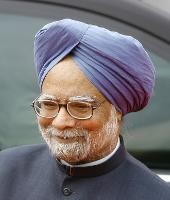Indian Prime Minister Manmohan Singh's tour of Japan, Malaysia and Vietnam this week gave a boost to India's "Look East" policy, underscoring the need for greater integration and deeper engagement between India and East Asia in trade and other strategic sectors. Singh, who traveled to Japan and Malaysia for bilateral visits and to Vietnam for the 8th ASEAN-India Summit, has made it clear that his government's foreign-policy priority will be East and Southeast Asia, which are poised for sustained growth in the 21st century.
India's efforts to make itself relevant to the region come at a time of great turmoil in the Asian strategic landscape. The recent standoff between Japan and China over the disputed Senkaku Islands shows that Beijing is adopting a more-aggressive stance against rivals and U.S. allies in Asia, and there may be more tension to come. With its political and economic rise, Beijing has started trying to dictate the boundaries of acceptable behavior to its neighbors. As a result, the U.S. and its allies have already started reassessing their regional strategies, and a loose anti-China balancing coalition is emerging.
Both New Delhi and Tokyo have made an effort in recent years to put Indo-Japanese ties into high gear. India's booming economy makes it an attractive trading and business partner for Japan as the latter tries to overcome its long years of economic stagnation. Japan is also reassessing its role as a security-provider in the region and beyond, and of all its neighbors, India seems most willing to acknowledge Japan's centrality in shaping the evolving Asia-Pacific security architecture. Moreover, a new generation of political leaders in India and Japan view each other with fresh eyes, allowing for a break from past policies that is changing the trajectory of bilateral relations.

